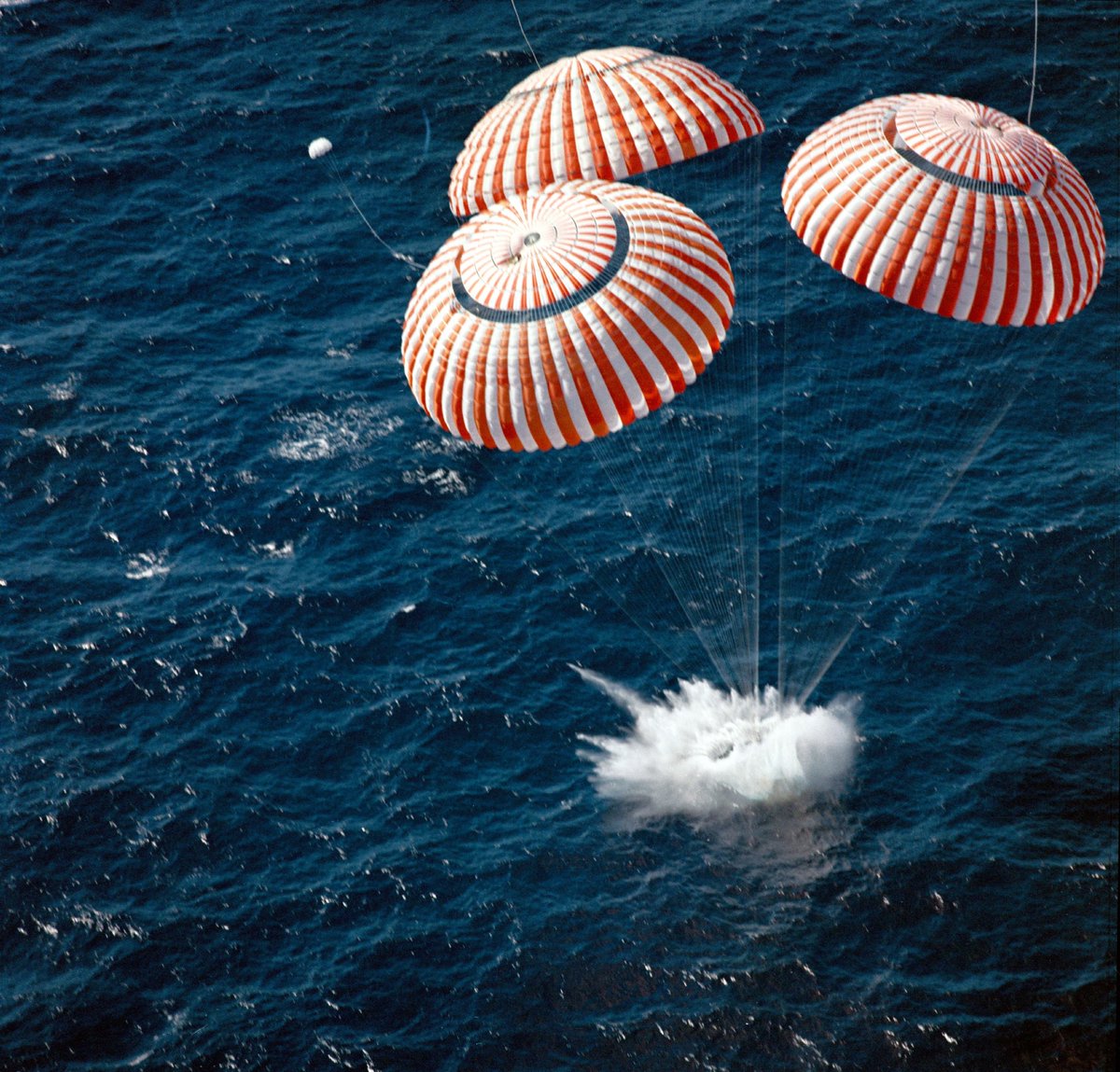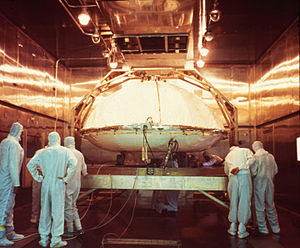
#PlanetaryProtection has an enormous impact on interplanetary #astrobiology mission design and execution. Check out the rest of this thread for a few case studies on how it has been implemented over the years!
Image: NASA/JPL-Caltech
Image: NASA/JPL-Caltech

During the #Apollo era, it was unknown whether life existed on the Moon. To prevent contamination of the Earth’s biosphere by lunar microbes, both astronauts and the samples they collected were subject to quarantine following return to Earth.
Image: NASA
Image: NASA

Following splashdown in the Pacific Ocean, Armstrong, Aldrin, and Collins were transferred to a camper-like mobile quarantine facility. From there, they were transported to Johnson Space Center, where they spent 3 weeks in quarantine.
Images: NASA

Images: NASA


Likewise, lunar samples collected during the Apollo missions were transferred to a special facility at Johnson Space Center, where scientists could assess whether these samples contained any signs of extraterrestrial life or other material that could pose a hazard.
Image: NASA
Image: NASA

Moving on to #Mars in our discussion of #PlanetaryProtection! The #Viking mission in the 1970s was subject to some of the strictest planetary protection requirements to date.
Image: NASA
#astrobiology #space #microbes
Image: NASA
#astrobiology #space #microbes

Since this mission was intended to specifically search for life, even small amounts of microbial hitchhikers from Earth derail life detection efforts. The spacecraft was sterilized as much as possible (seen here being prepared for dry heat sterilization).
Image: NASA
Image: NASA

Protocols developed for #Viking set a gold standard for planetary protection requirements for #astrobiology missions to #Mars and other celestial bodies, and still influence #PlanetaryProtection today.
Long before #Perseverance set off for the Red Planet, scientists and engineers were working to reduce the number of microbes carried onboard, by cleaning with special chemical wipes, heating components to nearly 400°C, and treatment with chemical vapors.
Image: NASA/JPL-Caltech
Image: NASA/JPL-Caltech

#PlanetaryProtection also extends beyond the end of a mission. #Microbes onboard decommissioned spacecraft can still pose a contamination risk to potentially #habitable worlds. This is especially concerning for #IcyMoons and #OceanWorlds of the outer Solar System.
Image: NASA/JPL
Image: NASA/JPL

One notable example of this was the Cassini spacecraft, which studied #Saturn and some of its #moons (such as #Titan and #Enceladus). To prevent collision with an astrobiologically-relevant moon, Cassini dove into the Saturnian atmosphere at the end of its mission. 



This animated video does a fantastic job of showing what Cassini's final task may have looked like!
#astrobiology #PlanetaryProtection #spacecraft #space #Saturn
#astrobiology #PlanetaryProtection #spacecraft #space #Saturn
• • •
Missing some Tweet in this thread? You can try to
force a refresh


